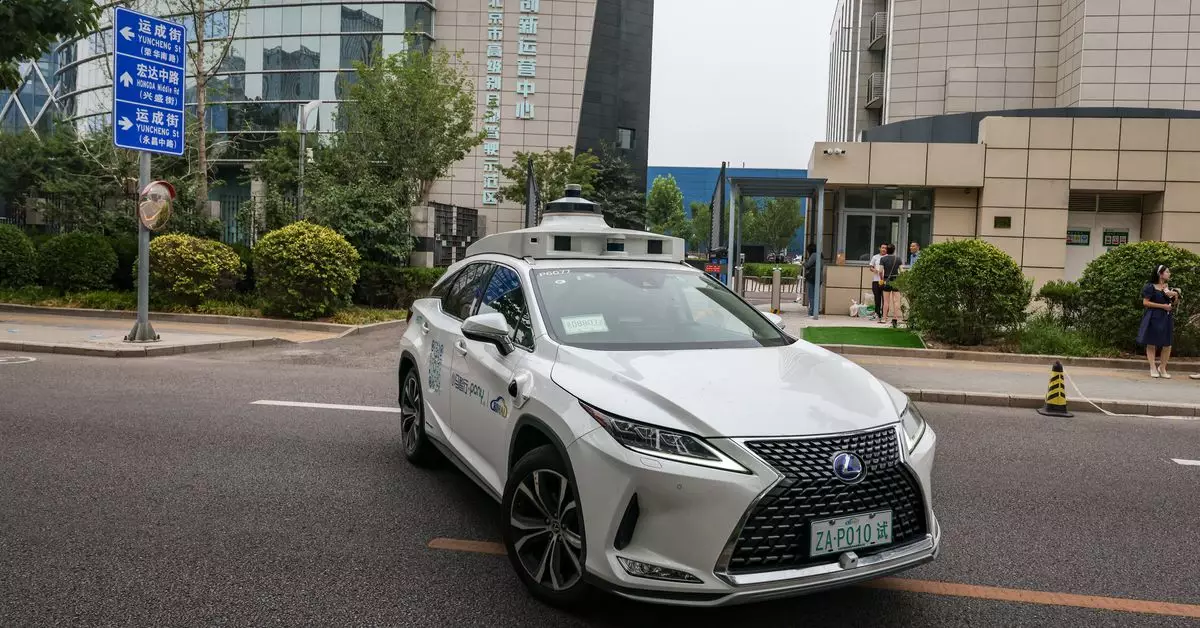In the rapidly evolving landscape of autonomous vehicle technology, the competition between the United States and China has reached a critical juncture. As American companies struggle to maintain momentum in the robotaxi sector, Chinese firms are expanding their fleets and service areas at an unprecedented rate. This divide not only highlights disparities in technological advancement but also unveils deeper economic and regulatory challenges that the U.S. must navigate to remain a contender in this pivotal field.
China’s Strategic Expansion in Autonomy
In a striking contrast to American firms like General Motors and Ford, which have retreated from investing in their robotaxi operations, Chinese company Pony.ai has announced an ambitious plan to increase its fleet from 250 to at least 1,000 vehicles by 2025. This expansion is bolstered by a partnership with GAC Aion, a subsidiary of one of China’s largest automobile manufacturers. The strategic focus is on first-tier cities—Beijing, Shanghai, Guangzhou, and Shenzhen—where urban density and consumer acceptance of autonomous technologies create fertile ground for growth. With the potential for over 26,000 rides weekly and technology that is being continually optimized, Pony.ai exemplifies how state-driven initiatives and access to affordable electric vehicles catapult the country’s autonomous ambitions forward.
Pony.ai’s model rests on the seamless integration of cutting-edge technology and government support, which contrasts sharply with the uncertainty faced by American counterparts. China’s regulatory environment not only allows for expansive testing and implementation, but also extends to financial incentives that drive down costs, making the development of robotaxis economically viable.
In stark contrast, the American landscape sits fraught with challenges. The decisions by GM to cease funding Cruise and Ford to dissolve Argo AI reflect a troubling trend where previously promising partnerships have faltered in the face of operational losses and strategic misalignments. While both companies articulate a shift towards advanced driver-assistance technologies in personal vehicles, the sketchy trajectory raises crucial questions about their long-term commitment to automated transport solutions.
The stark disintegration of these initiatives raises alarms regarding the future of self-driving cars in the U.S. and how the country can reclaim leadership in this growing market. As American companies retreat to safer waters, the resolution of trade disputes with China becomes critically important. American policymakers are already acting with increased vigilance—implementing tariffs and considering the blocking of Chinese vehicle software—to stem the tide of potential foreign dominance in autonomous technologies.
The state of U.S.-China relations underlines the stakes involved in the robotaxi race. The Biden administration’s proposed restrictions on the sale or import of software originating from China signals a protective stance toward national security concerns. Simultaneously, tariffs levied on electric vehicles heighten the risks and challenges of advancing American autonomy initiatives.
President-elect Donald Trump’s administration promises to exacerbate these tensions through even more onerous tariffs. Such protectionist measures could undercut development efforts, slowing technological advancement and compounding the economic trepidation surrounding the industry. If American developers cannot source affordable parts and vehicles, the viability of maintaining or expanding autonomous vehicle services becomes increasingly complex.
Despite the current advantages held by Chinese firms like Pony.ai and Baidu, a glaring alarm should resonate: no autonomous vehicle operator worldwide is presently profitable. The stark truth is that autonomous vehicle fleets must ramp up volume and efficiency to achieve sustainability, but regulatory, public acceptance, and environmental factors contribute to hesitance in rapid scaling.
Even major players like Waymo are exploring partnerships with foreign EV manufacturers, indicating a dire need to lower operational costs. Yet, with the U.S. Congress struggling to break a six-year legislative deadlock over autonomous vehicle regulations, the likelihood of U.S. companies unencumbered access to technology remains precarious.
The burgeoning divide between China and the U.S. in the autonomous vehicle arena reverberates with significant implications for both countries. As Pony.ai and others forge ahead with swift expansions and state support, questions about the viability of American robotaxi initiatives loom larger than ever. Adopting a revitalized approach that prioritizes innovation, regulatory clarity, and international collaboration could help reinvigorate the U.S. sector. However, the critical window is narrowing, and the race to define the future of robotaxis is fast approaching a consequential turning point. The stakes—technological equity, economic leadership, and national security—have never been higher.

